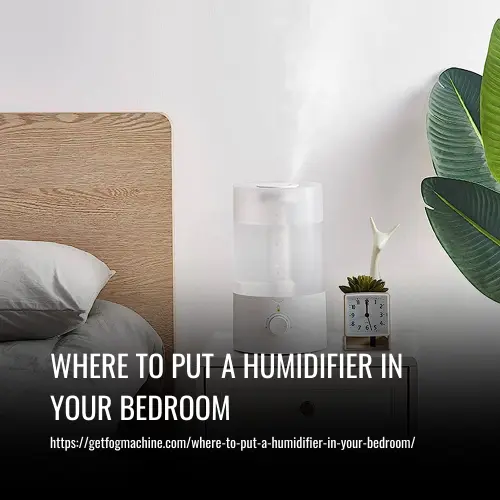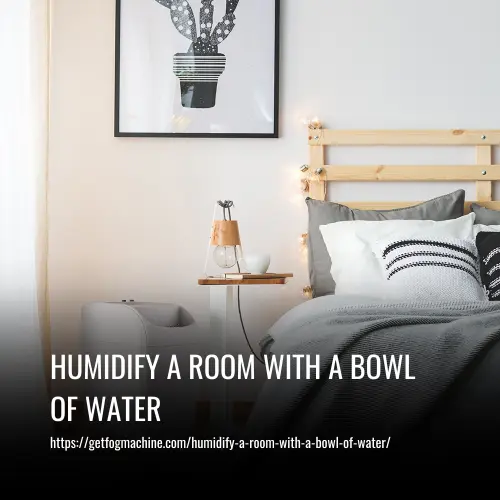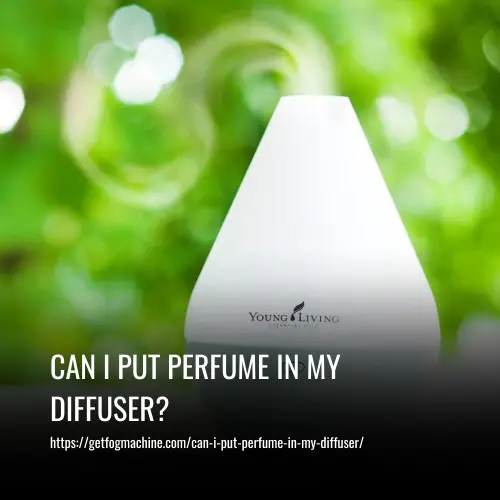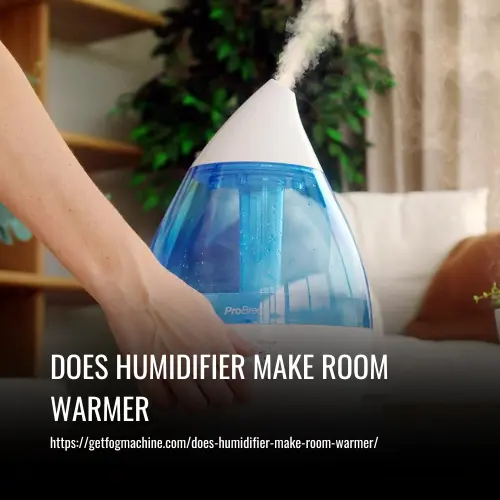Are Dehumidifiers Safe To Leave On?
This post contains affiliate links. As an Amazon Associate, we earn from qualifying purchases.
Yes, it is safe to leave your dehumidifier on overnight. Most devices have safety features like auto-defrost and auto-off functions to prevent overheating and tank overflows.
Dehumidifiers have become a popular home appliance, especially in areas with high levels of humidity. However, it’s natural to wonder whether it’s safe to leave them on for extended periods of time.
In this article, we will explore the safety features of modern dehumidifiers, the potential risks of leaving them on, and how to use them properly. If you own a dehumidifier or are thinking of buying one, read on to ensure you are using it safely and effectively.
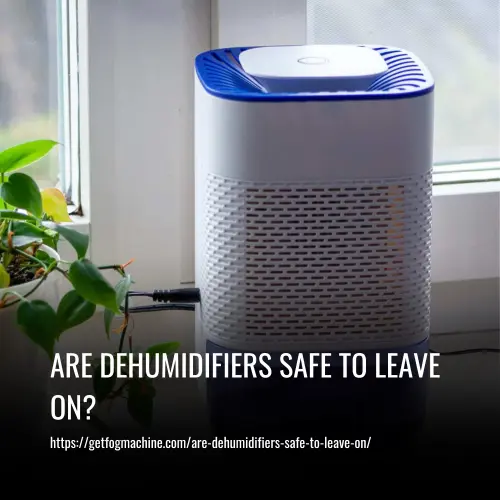
Are Dehumidifiers Safe To Leave On
Dehumidifiers are completely safe to leave on for extended periods of time as long as they are well-maintained and cleaned regularly. Most modern dehumidifiers come with safety features such as auto shut-off and defrost functions, making them ideal for continuous use without any safety risks.
However, it is important to ensure that there is no water leakage or overflow, to check the manual for any maximum running time specifications, and to choose a dehumidifier with a defrost feature for the safest prolonged use.
Are Dehumidifiers A Fire Hazard
Dehumidifiers do pose a minimal fire hazard as they mostly operate using electricity. However, the risks associated with a dehumidifier causing a fire are rare and are due to either manufacturer design flaws or customer misuse.
Proper maintenance, including not using the device in enclosed areas or obstructing airflow, can significantly reduce the risk. It is recommended to purchase a dehumidifier with features like auto defrost to prevent overworking and overheating.
Can You Leave A Dehumidifier Unattended
Yes, you can leave a dehumidifier unattended as most modern dehumidifiers have built-in safety features such as auto shut-off functionality. This feature ensures that the dehumidifier won’t keep running when it reaches its capacity or achieves the desired humidity level in the room, preventing potential safety risks such as fire hazards.
So, you don’t have to constantly worry about your safety if you leave your dehumidifier running unattended for extended periods. Enjoy peace of mind and improve your indoor air quality with the help of a high-quality dehumidifier.
Is it Safe to Leave a Dehumidifier Unattended?
Yes, it is safe to leave a dehumidifier unattended as long as it is used in accordance with its safety features and guidelines. However, prolonged use without proper maintenance and adherence to the device’s capacity could cause damage to its components and result in costly repairs.
The best way to determine if a dehumidifier needs to be turned on is by installing a hygrometer to monitor the humidity level. If you notice persistent high humidity, it’s important to investigate and resolve the root cause.
Potential Risks Of Leaving A Dehumidifier On Unattended
Dehumidifiers are essential appliances that help to maintain comfortable indoor humidity levels by removing excess moisture from the air. However, leaving a dehumidifier running unattended for extended periods can pose some potential risks.
Let’s explore the potential dangers associated with this practice so that you can protect yourself and your living space.
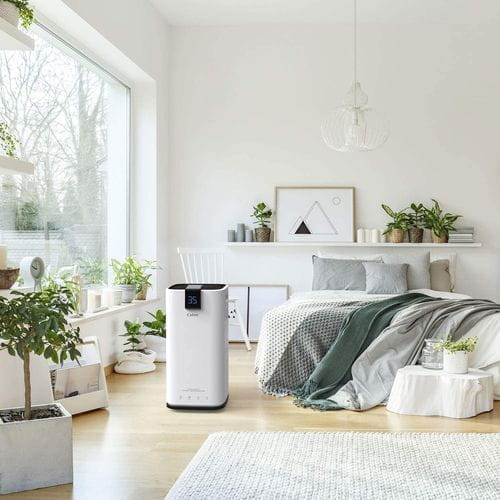
1. Fire Risk
Leaving your dehumidifier on unattended can increase the risk of a fire. While modern dehumidifiers come equipped with automatic shut-off features designed to trigger when they get too hot or full, they still run the risk of malfunctioning. In a worst-case scenario, a malfunctioning dehumidifier could overheat, spark, and cause a fire.
2. Electrical Issues
Extended use of a dehumidifier without supervision can put significant strain on electrical circuits or cords. This strain could lead to a hazardous situation such as sparks or short circuits. To avoid such situations, ensure you follow the manufacturer’s guidelines for usage and never use an extension cord.
3. Water Damage
If your dehumidifier lacks an automatic shut-off feature or the feature malfunctions, it could lead to the accumulation of water, which could spill onto floors or furniture. This water accumulation may result in furniture damage or even mold growth if left unnoticed, which can lead to various health issues.
4. Decreased Efficiency
Running a dehumidifier non-stop over time might damage its components and reduce its overall lifespan and effectiveness. Such damages are avoidable when you follow the manufacturer’s maintenance guidelines, which usually recommend turning off the dehumidifier to prevent overheating and preserve the appliance’s lifespan.
Is It Safe To Leave A Dehumidifier On Overnight
Yes, it is safe to leave a dehumidifier on overnight as most modern dehumidifiers include safety features such as an auto-shut-off function to prevent overflow and electrical issues. It is advised to place the unit in a safe location to avoid accidents or becoming unplugged.
Leaving the dehumidifier on helps maintain ideal humidity levels, keeping allergens at bay and ensuring a pleasant living environment. Ensure regular clean the filters for efficient functioning.
Is it Safe to Leave Dehumidifier On In The Basement?
Yes, it is safe to leave a dehumidifier on in the basement as long as it has auto shut-off and humidity control features. Keeping the unit on for at least 12 hours is advised by some, but it is best to monitor the humidity levels with a hygrometer and run the dehumidifier only when necessary.
The ideal level of humidity varies depending on your location, but it is important to remove excess moisture to prevent mold growth and ensure indoor air quality.
Can You Leave the Dehumidifier On when Out on Vacation?
If you are wondering whether you can leave your dehumidifier on while on vacation, the answer is both yes and no. If your dehumidifier supports continuous drainage, like the Danby 50-Pint Energy Star Dehumidifier with multiple draining selections, you can leave it on and attach a hose for a continuous flow of water.
However, safety is a concern, and leaving the dehumidifier on when no one is around can increase your electricity bill and counteract any of the dehumidifier’s useful features. It’s best to have your home inspected for the root cause of high humidity and leave the dehumidifier off.
If you must leave the dehumidifier on, ensure it’s in a secure location and position. Resolving the excess moisture issue in your home is rewarding and saves you money in the long run.
How To Keep Your Dehumidifier Running Safely While You’re Away
Dehumidifiers are an effective solution to excessive humidity levels that can lead to mold growth, degraded indoor air quality, and structural damage. Leaving your dehumidifier on for extended periods while you’re away from home can be a great way to maintain humidity at a safe level. Below are some ways to keep your dehumidifier running safely while you’re away:

1. Connect A Hose To The Water Tank
Dehumidifiers typically store the collected moisture in a water tank that needs to be emptied regularly. But you can connect a hose to the tank and run it to a floor drain, sump pit, or outdoors and forget about emptying the tank. Ensure that the hose is just long enough to reach the drain and that the hose is lying flat on the ground.
Some models come with drain hoses specifically designed for use with dehumidifiers, or you can use a garden hose. You may also consider a dehumidifier with a pump if the drainage distance is more than a hose can handle.
2. Utilize Auto Shut-Off Features
Many modern dehumidifiers come with an auto shut-off feature that automatically turns off the dehumidifier as soon as the water tank is full. You can leave your dehumidifier running unattended without worrying about using a drainage hose. Ensure you consult the owner’s manual to engage the auto shut-off feature or turn off the device without any intervention.
3. Change The Desired Humidity Level
Most dehumidifiers come with a humidity level setting, where you set the desired humidity level. Consider adjusting the humidity level set to a range of 30-50%, which is the ideal indoor humidity range while you’re away. This way, you can save on electricity costs while maintaining safe humidity levels. Ensure that you get a device that allows for adjusting the desired humidity level.
4. Choose A Cordless Dehumidifier
Opting for a cordless dehumidifier can be an alternative if power outages or electricity usage is a concern. Cordless dehumidifiers are perfect for small rooms, such as bathrooms, to keep the room free of moisture and keep air quality at safe levels. Some cordless dehumidifiers don’t come with a water tank, making them effortless to use and maintain.
How Long Should Your Dehumidifier Run
It’s not accurate to follow a 12-hour rule when running your dehumidifier as its effectiveness relies on the humidity level in your home. Using a hygrometer to measure the relative humidity is important to determine how long your dehumidifier should run.
If your home’s humidity is too high, you can leave your dehumidifier on continuously until you reach a comfortable humidity level or below 60% relative humidity. You can test for a week and adjust your dehumidifier’s runtime as needed. You can refer to your unit’s manufacturer manual for complete runtime control details.
How Much Does Dehumidifier Cost To Run Continuously
If you’re concerned about how much it will cost to run your dehumidifier continuously, there are a few factors to consider. Firstly, look for Energy Star-certified or high-efficiency models that consume less power. Additionally, the size of your unit plays a role, with smaller models using less energy than larger ones.
The longer you run the dehumidifier, the more energy it will consume, so consider using a timer or manually turning it off when humidity levels are satisfactory to save on costs. Finally, your utility company’s rates will determine how much it costs to run your dehumidifier. Always consult the manual for specific operating instructions and guidelines to ensure you’re managing the device properly.
FAQs
How Often Do You Have To Empty A Dehumidifier?
Dehumidifiers can fill up their reservoir tank in a matter of hours, depending on the humidity level and tank capacity. There is no standard duration period, and it can vary from region to region. This can be problematic if you are away from your home for a few days. Fortunately, there are methods to address this issue, such as attaching a hose to the tank for continuous drainage.
Are There Any Specific Models Of Dehumidifiers That Are Safer To Leave On Unattended?
When it comes to leaving dehumidifiers on unattended, there are specific models that stand out for safety. Brands like Frigidaire and hOmeLabs are known for their reliability and durability and have built-in features like auto shut-off and continuous drain options that make them safer to leave running for extended periods. These high-quality dehumidifiers will effectively control humidity levels without posing safety risks, allowing you to enjoy improved indoor air quality without worry.
Is It Safe To Leave Dehumidifier On While Sleeping?
When it comes to leaving your dehumidifier on overnight, it’s important to have certain safety features in place. As long as your dehumidifier has an auto defrost function to prevent overheating and an auto shutoff feature for when the water tank reaches capacity, it is generally safe to leave it on while sleeping. However, keep in mind that noise levels from the machine may be an issue, and if the tank is not large or there is no continuous drainage system, running the dehumidifier all night may not be necessary or practical.
Can I Use A Smart Plug To Automatically Control My Dehumidifier When It’s Left On?
Yes, using a smart plug or timer to control your dehumidifier when it’s left on is a safe and convenient solution. This allows you to set a specific time for the device to turn off, ensuring that excess moisture is removed without the risk of safety hazards. With advanced features such as remote access through smartphone apps, you’ll have even more control over your dehumidifier and can customize humidity levels to your liking. Smart plugs offer an extra layer of safety and convenience, making it an ideal solution for managing your home’s relative humidity.
When Should I Turn off My Dehumidifier?
The ideal indoor relative humidity level is between 30% and 50%. To maintain this range, turn off your dehumidifier when the humidity level goes above or below it. To make things easier, choose a dehumidifier that comes with an auto shut-off feature that will turn the unit off when the humidity reaches an optimal level. If the air feels too humid and the unit doesn’t seem to be working efficiently, turn it off immediately and check for any problems with the filters or drainage system. If you cannot identify any issues, it might be time to replace your dehumidifier. Contact the manufacturer’s service center to see if the unit is still under warranty and to get a replacement at little or no cost.
What Are The Signs That My Dehumidifier May Not Be Functioning Properly?
When using a dehumidifier, it is important to remain cautious and vigilant for any signs that it may not be functioning properly. These signs include unusual noises, poor performance, water leaks, or the smell of burning plastic. Ignoring these potential issues can lead to safety risks if left unaddressed. By promptly identifying and addressing any problems, you can ensure that your dehumidifier is functioning safely and effectively, maintaining a healthy and comfortable living environment for you and your family.
Should I Run My Dehumidifier On Low, Medium, Or High?
Dehumidifiers should be run based on the amount of moisture present in your home. Running the device 24/7 requires setting it on high mode and monitoring its performance with an indicator light or a hygrometer. However, if there are no visible signs of condensation, you can switch to low mode which reduces wear and tear of internal components and saves power in the long run. The ideal mode depends on your target humidity level and the current humidity level in your home.
Is It Safe To Clean A Dehumidifier?
Cleaning your dehumidifier is essential for smooth functioning and maintaining a healthy environment at home. It is safe to clean a dehumidifier if you follow some basic guidelines. Always unplug the unit before cleaning. Clean or replace the air filter as instructed in the owner’s manual. Regularly empty and wash the water collection tank to prevent mold growth. Use a damp cloth to wipe down the exterior surfaces. Ensure that your dehumidifier has an auto defrost function to prevent ice buildup in colder climates. These routine maintenance checks not only improve the performance of your device but also ensure safety while cleaning it. With proper care, dehumidifiers are safe to leave on, and there are no risks associated with cleaning them. Enjoy a comfortable and healthy living space by following these simple steps.
Are There Any Additional Safety Features I Should Look For In A Dehumidifier?
Yes, when looking for a dehumidifier, it’s important to keep safety in mind during extended use. Look for models with auto shut-off capabilities when the water tank is full, or if there’s a risk of overheating. A built-in timer is also beneficial if you want to program preferred hours of operation. Opting for an Energy Star-certified dehumidifier not only saves electricity but may also reduce the risk of overheating. To ensure a worry-free atmosphere in your home, invest in a high-quality, safe dehumidifier with additional safety features that meet your needs.
Conclusion
Dehumidifiers are generally safe to leave on as long as they are used properly and have the necessary safety features. Modern dehumidifiers come with safety features such as an auto shut-off function or a tilt safety feature to prevent accidents like water leakage.
However, it is important to note that leaving a dehumidifier on for extended periods of time without checking the water tank or using a continuous drainage hose can pose safety risks such as overflowing or water damage.
Regular maintenance and cleaning, including emptying the water reservoir or checking the moisture levels, is crucial for ensuring safety and efficiency. It is also important to choose a dehumidifier that is the right size for your space and has the ideal level of humidity control.

